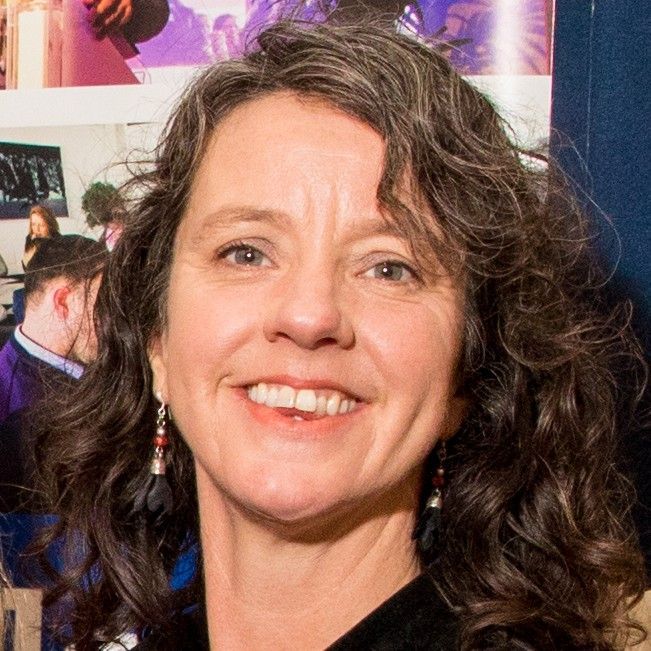Design Thinking & Global Citizenship Education
As part of our work through the Bridge 47 project, IDEA has run two train-the-trainer courses on Design Thinking for Global Citizenship Education (GCE) practitioners. Here is a blog written by Birgit O'Driscoll, a Global Citizenship Officer of Green-Schools, who attended both trainings, sharing how design thinking has helped her GCE work.
June 12th 2019, a day like any other. Sitting at my desk in the head office preparing for the teacher training event we have coming up. Another email hits my inbox, ‘Two creative training events’ reads the subject. Oh no, I really can’t get any more creative, I’m too busy! But there it is, a train the trainer two-day workshop on ‘Design Thinking for Solving Global Challenges’ for GCE practitioners in bright orange, my favourite colour! It looks interesting…
Design Thinking – I was pushed out of my comfort zone to say the least. What grabbed me most about this approach is that we investigated problems in a way I’ve never done before. I’m a solution kind of person. Give me a problem and within two minutes I’ll tell you what to do to solve it, I’m the person who can fix everything… or so I thought. Well, how wrong was I!
With Design Thinking you start by thoroughly investigating what the problem is. On day one we were told to diverge…what does that mean? Turns out it means finding out what people think of what you perceive as a problem. Is it a problem? We had to explore what people were saying about the subject of plastic waste and if they even perceived is as problematic – to get as much information as possible in a short space of time. So, we were given half an hour to go out onto the street and approach random people. We had to really dive in, speak to as many people as possible, put our ‘problem’ to them and listen! This part of the process requires active listening and empathy with what people feel, think, and say to ‘Fall in love with the problem, not the solution’ After our interview sessions we shared what we had learnt and decided on the problem, we converged! We then had to build a persona and find ways to help this person reduce their plastic consumption.
As the process is so high-paced, you hardly get a minute to think. It means that people throw out all sorts of ideas, even if they sound a little bit ‘out there’. It means that you have no choice but to be alright with failure. One of the high-paced activities is writing down an A-Z of solutions with your team as quickly as possible. Of course, not all the ideas will make sense, and some will even cause a few giggles, but that is exactly what it’s all about, having fun during the process. If you’re happy and excited your mind opens and innovation just comes naturally.
It was such a fun, high-paced way of working and the solutions that came about on the second day of the process were so innovative that both myself and my colleague Joanne felt that we were going to have to pass on what we had learnt. We began by training our own staff in the process and since then we have all been using some or all the techniques we learnt in our student workshops.
During one of our secondary school workshops we had one team of students, who had only met that day, pitch an idea about tackling environmental challenge of disposable feminine hygiene products by replacing them with reusable ones. This idea ended up becoming a reality in one of the schools that attended on the day. We firmly believe it was the Design Thinking facilitation techniques we learnt during the Bridge 47 training that helped these students to be so innovative.
Again, this year I attended Bridge 47’s ‘Global Goals Jam’ training designed for GCE facilitators as a follow up to last year’s Design Thinking training. This time the training was delivered online as four sessions throughout the month of June. Surprisingly, the online format didn’t stop me from enjoying learning about the Design Thinking approaches and process, and working on developing an idea and designing a Global Goals-related local project.
One of the methods I enjoyed a lot was to go out on a ‘photo walk’. Simply looking at and paying attention to my surroundings opened my mind and helped me come up with creative ideas translating big global goals into smaller local design steps. We used this method in our Green-Schools online teacher training where we asked teachers, working in groups, to develop a local project to raise awareness about the importance of Goal 4 on Quality Education. While enjoying the new brainstorming technique, teachers came up with simple but powerful project ideas which varied from learning to grow food to become self-sufficient, to addressing global waste problems by educating local communities on how to correctly reduce, reuse and recycle materials.
I think that Design Thinking can and will be a very large part of how we tackle global environmental challenges. Determining the problem is such a big part of the process, and the fun that is involved in this high-paced approach gives space to all the, so called, crazy ideas to come out. As a result, this way of working enables us to actually hear our young people and listen to their inventive ways of looking at things.
As I once told a first class boy – who was laughed at by everyone else in the class when he said: “ we should create a robot squirrel who would chase off the invasive grey squirrel allowing the red squirrel to make a comeback ” – that is exactly the kind of innovative thinking we need. Well done you!
(Image credit: Amsterdam University of Applied Sciences Digital Society School)









